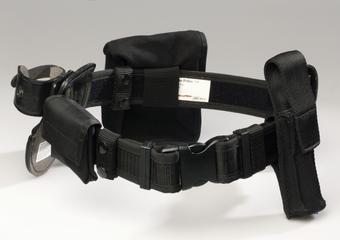
Extendable banner with carrying bag for the Human Challenge Study
- Made:
- 2020-2021 in unknown place
Extendable banner with carrying bag as used at the entrance of the quarantine unit of the COVID-19 Human Challenge programme by Imperial College London, the Department for Business, Energy and Industrial Strategy (BEIS), hVIVO, and the Royal Free London NHS Foundation Trust, 2020-2021
Extendable banner with carrying bag as used at the entrance of the quarantine unit of the COVID-19 Human Challenge programme by Imperial College London, the Department for Business, Energy and Industrial Strategy (BEIS), hVIVO, and the Royal Free London NHS Foundation Trust, 2020-2021
Beginning in February 2021, the Human Challenge Study was the first in the world to perform detailed monitoring over the course of a COVID-19 infection to better understand our biological response to the virus. The study tracked what happens from the moment a person first encounters the virus, the progression of an infection and the end point when the virus is apparently eliminated. Led by Christopher Chiu, Professor of Infectious Diseases at Imperial College London, the study recruited 36 healthy, volunteers aged 18-30 years old. All were unvaccinated against COVID-19 and with no prior infection. Each was given a low dose of the virus which circulated in the UK in March 2020, which is of low risk to healthy adults.
Over a period of two weeks, the volunteers were carefully monitored by clinical staff in a controlled environment. Out of 36 initial participants, a total of 18 developed a COVID-19 infection. Each day participants had blood tests, breathing tests, ECGs and clinical assessments including blood pressure checks. Three times a day, they completed a symptom diary. CT chest scans were carried out on all participants on day 5 and those with a COVID-19 infection on day 10. Twice a week, participants used a lateral flow test. Swabs of frequently touched areas were also taken. To protect themselves, clinical staff and researchers wore Personal Protective Equipment (PPE).
The team found that symptoms developed on average about two days after contact with the virus. The infection first appears in the throat and within five days, the amount of virus peaks in a person’s body peaks. At that stage, the virus is more abundant in the nose than the throat. Analysis found that the virus was also present in exhaled air and in swabs of participants hands and on surrounding surfaces, showing possible routes of transmission. The team also reported that that lateral flow tests were a reliable indicator of whether infectious virus is present. For 12 months after the study, participants were monitored for any potential long-term effects. Each participant was also reimbursed for their time and expenses.
Further Human Challenges aim to understand more about immunity to COVID-19 and to understand more about why some people have a different response to the virus – either showing no infection or few or no symptoms. The studies which will also use different variants of the virus as to test vaccines developed to prevent COVID-19.
Details
- Category:
- Public Health & Hygiene
- Object Number:
- 2022-1064
- Measurements:
-
overall (opened): 2000 mm x 850 mm x 20 mm,
overall (closed): 100 mm x 850 mm x 10 mm,
- type:
- banner




